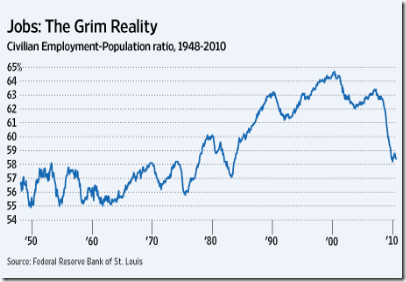John Michaelson published today on WSJ a piece entitled “The high costs of very low interest rates”, in which he first gives reasons why the policy of keeping the short term interest rate to its current near zero levels is not productive, and then he explains what he sees as benefits of raising the short term rate. This article constitutes a good piece for thought. Let’s discuss its merits. In short, the consequences of the near zero rate policy, as stated by Mr. Michaelson, are:
-
Negligible returns on savings. This hurts consumers who “have less to spend” (the income effect), “and those nearing retirement have to save more”. Also, “the owners or managers of pension plans, foundations, trusts and the like must also make higher contributions to make up for lower investment earnings in order to meet their obligations. In the case of public pension plans, these higher contributions contribute to local and state fiscal crises.”
-
Banks are not forced to lend to the real economy, rather they enjoy the benefits of a riskless yield curve arbitrage, by borrowing at near zero and buying long-term Treasuries or high grade corporates.
Mr. Michaelson acknowledges that the FED’s policy was intended to revitalize consumption and lending. However, he points that the beneficiaries of this policy, the consumers, the banks, and the companies do not play by the book, i.e., they do not consume, they do not lend, and they do not invest. He also warns against the near zero interest rate policy, citing the example of Japan in the nineties and its lost decade.
Turning onto the benefits of increasing the short term rate, he sees that this could lead to:
-
“More funds will flow to borrowers who will invest them in job-creating activities and increase consumption”, ending the carry trade on dollar and the yield curve arbitrage.
-
“Will cause Americans to feel more confident about their economic future”.
Hence, raising the short-term interest rate to a merely low level, than the near zero current level, it will make banks “less tolerant of underperforming assets and seek to move those assets more swiftly to superior owners and operators, creating additional efficiencies and job-creating growth”.
Mr. Michaelson’s argument is indeed well structured and it may actually be, very succinctly, describing the current problem and its solution. However, I would like to make a few comments. First, in reference to the Japan’s lost decade, this is not a result of the near-zero interest rate policy, alone. The author seems to suggest that the failure of the Japanese economy in the nineties, is solely due to this policy, however, one could not forget that it is never one policy that is only implemented, and other policies could have contributed to this result. For example, regarding Japan, one could also cite the lack of nerve from the side of the authorities in forcing their banks to come clean fast enough. Rather, they chose to hide the problems that the banks’ portfolios had, effectively undermining their efforts for recovery.
In addition, I would like to emphasize that there are some moving parts in Mr. Michaelson’s argument. Even though an increase in the rate will discourage the carry trade and the yield curve arbitrage, and at the same time will encourage undertaking more risky and job-creating investments, the effect of raising interest rates on consumers and the firms is not as clear. And in Mr. Michaelson’s argument the behavior of the consumers is very critical. The consumers, in his argument, encouraged by the income effect, will increase current consumption and this will also encourage the firms – who currently sit on piles of cash – to invest more, hence create more jobs, which will lead to more consumption, and so on. This is based on the presumption that the income effect is stronger than the substitution effect – the tendency of the consumers to save more when interest rates are higher, given that it will result to higher future consumption. Even though the debate on which effect is stronger is still alive, the widely accepted conclusion seems to be that the substitution effect wins. This goes against Mr. Michaelson’s argument. However, there is a silver lining in that the win of the substitution effect over the income effect is not very strong, hence it could be that this time around the income effect could dominate.
This is indeed a suggestion contrary to the conventional wisdom, but it could as well be right, this time.
